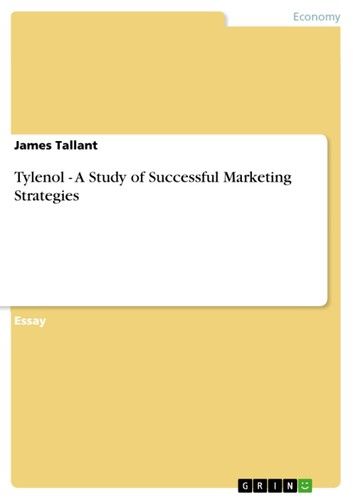Essay from the year 2009 in the subject Business economics - Marketing, Corporate Communication, CRM, Market Research, Social Media, grade: 100.00, University of Phoenix, course: MKT 421 Marketing, language: English, abstract: Tylenol-A Study of Successful Marketing Strategies Introduction Marketing is used by organizations in various ways. More than just advertising, marketing is the procedure that answers the questions of what the needs, wants, fears, and desires of ones target consumers are. Aiming to meet these criteria, an organization develops a marketing plan. Marketing involves various processes which include research of a targeted consumer base and a product or service, initiation and development of a product or service, distribution, promotion, advertising, sales, and customer follow up that is conducted ethically by doing the right thing. Concisely stated, successful marketing is divided into four categories: product, place or distribution, promotion, and price. To achieve these steps successfully, an organization must identify the area of focus and use available resources to ensure long-term viability. Satisfactorily meeting these steps results in future repeat purchases by customers leading to greater sales, which is the ultimate goal of business. Balancing profits and customer satisfaction is attained through effective and efficient marketing. Without an effective marketing plan 'many organizations invest millions of dollars of resources in marketing without defensible, equitable evidence as to what financial benefit those efforts create' (Dunn and Halsall, 2009, p.1, ¶3). Marketing plans must be flexible by seeking new and improved ways to introduce and implement products and services during successful or adverse fluctuating market conditions. For example, during an economic recession, Hudak (2009), states, 'To survive, a company must know how to successfully market itself during these economic downturns' (p.3, ¶1). By thinking outside normal marketing channels, organizations can expand its marketing reach by 'changing culturally' and by use of 'new media such as online social networking website Facebook.com.' (Tasgal, 2009, p.437, ¶6).












